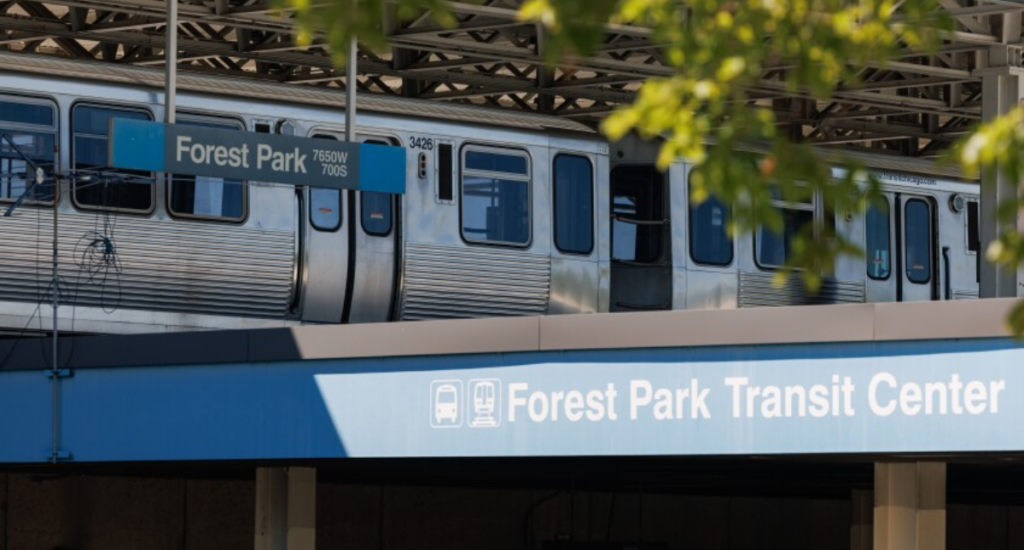
In a shocking event that gripped the Chicago area, a man was charged in connection with the killing of four individuals aboard a CTA Blue Line train.
The horrifying incident took place in Forest Park, a suburban area just outside Chicago. The four victims, all of whom were reportedly asleep at the time of the attack, were shot dead in what appears to be a senseless act of violence.
The suspect, identified as Rhanni Davis, is now facing serious charges for this horrific crime. Authorities, along with the Chicago Transit Authority (CTA) and other officials, are grappling with the aftermath of the tragedy, with the community seeking answers to understand what led to such a brutal event.
Suspect Charged in Killing of 4 Sleeping People on CTA Blue Line Train
On a quiet morning, as a CTA Blue Line train approached the Forest Park terminal, tragedy struck. Rhanni Davis, a 30-year-old man from Chicago, was charged with four counts of first-degree murder after a brutal shooting that left four people dead.
The victims, all of whom were asleep at the time, were shot while the train was in transit. Three of the victims were declared dead at the scene, while the fourth succumbed to injuries at a nearby hospital.
This senseless act of violence has left many stunned, especially as the victims appeared to be random passengers who had no connection to the suspect.
Authorities have confirmed that the suspect acted alone and did not appear to know any of the victims, further adding to the mystery surrounding the motive behind the crime.
Tobey Maguire’s Ex-Wife Jennifer Meyer Engaged to Billionaire Heir Geoffrey Ogunlesi
Details of the Incident: How the Tragedy Unfolded
The shooting took place in the early hours of the morning, around 5:30 a.m., as the Blue Line train neared the Forest Park terminal.
The suspect, Rhanni Davis, was seen on surveillance footage boarding the train at an earlier stop. As the train moved along its route, Davis allegedly opened fire, targeting passengers who were asleep.
The attack seemed random, with no apparent attempt at robbery or any interaction between the suspect and the victims before the shooting.
The victims, identified as Simeon Bihesi (28), Adrian Collins (60), Margaret Miller (64), and a 52-year-old man whose identity is yet to be confirmed, were all fatally wounded.
The train’s security cameras captured the entire incident, providing crucial evidence that led to Davis’ arrest.
Shortly after the shooting, Davis was located on a CTA Pink Line train and taken into custody without further incident.
A 9mm Glock 43 was recovered from him, which was later matched to the shell casings found at the scene, further solidifying the case against him.
Community Reaction: Shock, Grief, and Calls for Action
The community has been left reeling in the wake of this tragic event. For many, the idea that such a horrific crime could happen on public transportation, a space where people should feel safe, is deeply unsettling.
Cook County State’s Attorney Kim Foxx, along with CTA President Dorval Carter, addressed the public, expressing their condolences and vowing to do everything in their power to ensure that such an incident does not happen again.
Many community members and advocacy groups have raised concerns about the safety of public transportation in the city.
The Chicago Coalition to End Homelessness highlighted that many of the victims were likely unhoused individuals seeking refuge on the CTA train, underlining the broader societal issues of homelessness and safety.

CTA President Carter also emphasized that the agency has been working to address homelessness and crime on public transit but acknowledged that these issues require a collaborative effort from various sectors, including law enforcement, social services, and the community.
CTA Safety Measures: What is Being Done to Protect Riders?
In response to the shooting, CTA officials have reiterated their commitment to enhancing safety on public transportation.
The agency recently launched a pilot program using AI gun detection technology, known as ZeroEyes, to monitor for potential threats.
However, CTA President Carter confirmed that the technology was not involved in this incident, as it currently only scans platforms and not the trains themselves.
The possibility of expanding this technology to monitor trains is being considered as part of broader safety measures.
In addition to technology, the CTA has increased its partnerships with social service agencies to provide support for unhoused individuals who use public transit as a shelter.
These efforts include connecting people with resources that can help them find housing or other forms of assistance, though Carter acknowledges that more work needs to be done.
Legal Proceedings and Potential Outcomes
Rhanni Davis has been charged with four counts of first-degree murder, and if convicted, he faces life in prison without the possibility of parole.
The case against Davis appears strong, with surveillance footage, forensic evidence linking him to the crime, and his prior criminal history all contributing to the prosecution’s case.
Davis has been arrested multiple times in the past, with charges ranging from battery to disorderly conduct.
One of the key questions in the legal proceedings will be Davis’ mental state at the time of the shooting.
Legal experts have suggested that his defense may focus on claims of insanity or mental illness, as this is one of the few defenses available in a case where there is overwhelming evidence of guilt.
However, proving insanity in court is a complex process, and it remains to be seen how this will play out in Davis’ trial.
Conclusion
The tragic killing of four people on a CTA Blue Line train has left a deep scar on the Chicago community.
As the legal process moves forward, questions about public safety, mental health, and homelessness are being raised with increasing urgency.
While the suspect has been apprehended, the ripple effects of this senseless violence will be felt for a long time.
The CTA, law enforcement, and the community must work together to prevent such tragedies in the future and ensure that public transportation remains a safe space for all.
